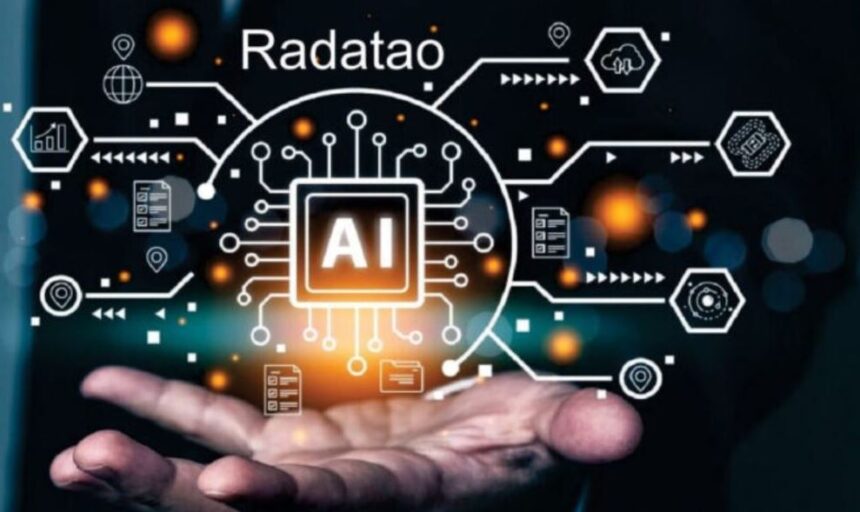Introduction: A Story of Connection in a Fragmented World
Emma sat on the edge of her bed, surrounded by a sea of digital files. Reports from her remote job, videos from her latest family trip, and old school documents — all scattered across cloud platforms, local drives, and forgotten folders. She felt overwhelmed. “How did my data become such a mess?” she whispered.
Like Emma, millions face the same struggle. In a time where information is everything, we often lose track of what we have and where it’s stored. That’s when she stumbled across rdatao, a concept that quietly promises to change how we handle our personal and business data forever.
What Is Rdatao?
Rdatao (pronounced ar-da-tow) refers to a structured approach to organizing relational data across open-source and decentralized environments. In simpler terms, it’s a smarter, more connected way of managing information.
Think of it like a GPS for your digital world — one that doesn’t just find your files, but links them logically across devices, formats, and systems. It helps ensure your data isn’t just stored — it’s accessible, meaningful, and secure.
Why Data Management Is Broken
Scattered Systems, Fractured Access
Modern digital life involves a tangle of apps, devices, and platforms:
-
Work data lives in corporate clouds
-
Photos are in personal Google Drive or iCloud
-
Notes are split between Evernote, Notion, and Apple Notes
-
Sensitive files are buried in hard drives or USB sticks
This creates data silos — isolated pockets of information that don’t talk to each other.
The Risk of Poor Data Practices
When data is poorly managed, the consequences are serious:
-
Lost productivity from wasted searching
-
Data breaches due to unsecured storage
-
Compliance issues in businesses (GDPR, HIPAA, etc.)
-
Overwhelming digital clutter causing stress
That’s where rdatao enters as a practical framework that brings cohesion, transparency, and automation into our digital lives.
The Core Principles of Rdatao
To truly understand rdatao, let’s explore its foundational values. These are not just technical guidelines — they represent a new mindset toward data ownership and intelligence.
1. Relational Integrity
Rdatao treats data as relational, not isolated. Files, records, and media are connected by context.
-
A spreadsheet isn’t just numbers — it links to meetings, reports, and team updates.
-
An image can connect to events, locations, and individuals via metadata.
This context-aware system reduces redundancy and increases discoverability.
2. Decentralization
Instead of central servers, rdatao often uses decentralized storage models, such as:
-
IPFS (InterPlanetary File System)
-
Blockchain metadata indexing
-
Self-sovereign cloud environments
You remain the true owner of your data — not Big Tech.
3. Open-Source Ecosystem
Rdatao thrives on collaboration and transparency. It uses open protocols and tools, making it adaptable for:
-
Developers building interoperable apps
-
Researchers needing clean, connected datasets
-
Enterprises seeking vendor-neutral solutions
Popular tools and languages used with rdatao include:
-
RDF (Resource Description Framework)
-
SPARQL (for querying linked data)
-
JSON-LD (Lightweight Linked Data format)
Benefits of Using Rdatao
For Individuals
-
Find anything fast: Rdatao links data logically, making retrieval intuitive
-
Data privacy: Your data is stored where you choose, not sold or tracked
-
Less clutter: Cleaner digital spaces with linked context
For Businesses
-
Compliance-ready: Easier auditing and regulation compliance
-
System integration: Connect CRM, HR, finance, and operations data
-
Real-time insights: Relationships in data lead to better dashboards and forecasts
For Developers
-
Modular systems: Build on existing open standards
-
Cross-platform: No vendor lock-in
-
Scalable: Easily scale from small projects to enterprise apps
How Rdatao Works in Real Life
Let’s walk through three examples to see rdatao in action.
1. A University Digital Archive
Problem: Students and faculty stored papers, syllabi, research, and media across multiple platforms.
Rdatao Solution:
-
Linked all assets via RDF into a centralized knowledge graph
-
Allowed semantic search (e.g., “All climate change research by female faculty, post-2020”)
-
Gave ownership control to individual users
2. Healthcare Data Compliance
Problem: A hospital struggled with siloed patient records across departments.
Rdatao Solution:
-
Unified data under a relational framework
-
Enforced metadata tagging (diagnoses, treatments, lab results)
-
Enabled HIPAA-compliant decentralized access per doctor/patient role
3. A Personal Digital Garden
Problem: A freelancer had notes, designs, and invoices scattered across devices.
Rdatao Solution:
-
Created linked data maps using open-source apps like Obsidian with plugins
-
Enabled tagging by client, project, and year
-
Resulted in faster billing, better creativity tracking, and peace of mind
Rdatao vs Traditional Data Models
| Feature | Traditional Model | Rdatao Framework |
|---|---|---|
| Data Structure | Flat, folder-based | Contextual, relational |
| Ownership | Often vendor-controlled | User-controlled |
| Interoperability | Limited | High, using open standards |
| Decentralization | Rare | Core principle |
| Search & Discovery | Keyword-based | Semantic & relational |
| Adaptability | Low | Modular and flexible |
Optimized Answer: What Is Rdatao?
Rdatao is a data management approach that organizes and connects information through relational structures, open-source technologies, and decentralized storage — helping users achieve smarter, safer, and more efficient digital experiences.
Challenges and Limitations
Rdatao offers significant advantages, but like all emerging tech, it has its limitations.
1. Learning Curve
Terms like SPARQL, linked data, and semantic graphs can be overwhelming for newcomers. User-friendly tools are still catching up.
2. Integration Complexity
Linking legacy systems or non-standard formats into a relational structure requires careful planning and possible custom development.
3. Standardization Issues
Though rdatao embraces open standards, adoption varies across industries and platforms.
Still, the ecosystem is growing, and tools like Solid, Wikidata, and GraphDB are leading the way.
Getting Started with Rdatao
Ready to try it out? Here’s how you can begin.
1: Map Your Data World
-
List major data sources (e.g., Dropbox, Drive, Notion)
-
Group them by purpose, not format (e.g., “work”, “personal”, “finance”)
2: Choose Tools
For personal use:
-
Obsidian or Logseq for semantic note-taking
-
TiddlyWiki for linked knowledge storage
For businesses:
-
GraphDB or Neo4j for creating knowledge graphs
-
Solid PODs for self-sovereign data storage
3: Learn Basic RDF/JSON-LD
These are markup languages that help create relationships between data. Even a few basics can empower your systems.
Future of Rdatao and Semantic Web
We’re moving toward a Semantic Web, where data is not just linked but understood. Imagine:
-
Google searches returning exact answers, not just links
-
Smart assistants that connect your calendar, emails, and to-dos intelligently
-
Health apps that track mood, diet, and medication with real insights
Rdatao is a stepping stone to that future — one where data finally serves us, not the other way around.
Conclusion: Time to Take Control of Your Data
Emma, our story’s hero, now has a dashboard that ties her work reports to client names, her travel photos to events, and her notes to inspirations. Her digital life feels lighter, clearer, and smarter.
You can do the same.
Rdatao is more than just tech jargon — it’s a fresh way of thinking about your data: connected, meaningful, and yours.
By embracing open-source tools, decentralization, and relational logic, rdatao brings clarity to digital chaos. Whether you’re a student, entrepreneur, developer, or everyday user, the time to rethink your data is now.





